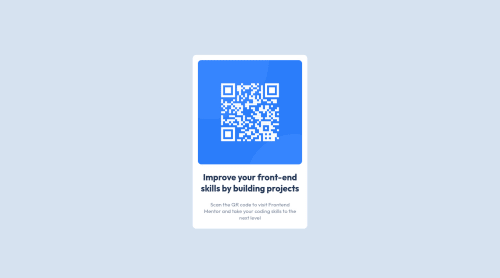Submitted about 3 years agoA solution to the QR code component challenge
QR Code Component with Flexbox and LESS
less, accessibility
@Joe-Whitehead

Solution retrospective
Hello, This is my first attempt at HTML/CSS (Using LESS pre-processor) since not touching anything web related for about 5/6 years. Getting started in this I found I had forgotten almost everything, and it was interesting discovering the flexbox features.
My question to the community is how do you decide what frameworks you are going to use for a particular project? and do you pre-plan or dive straight in and figure it out as you go?
Thanks, Joe
Code
Loading...
Please log in to post a comment
Log in with GitHubCommunity feedback
No feedback yet. Be the first to give feedback on Joe's solution.
Join our Discord community
Join thousands of Frontend Mentor community members taking the challenges, sharing resources, helping each other, and chatting about all things front-end!
Join our Discord